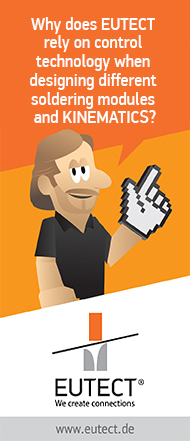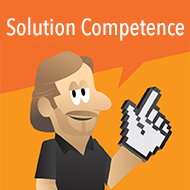Why does EUTECT rely on control technology when designing different soldering modules and kinematics?
A process can only be truly controlled if the technology is aware of how it behaves at the solder joint. At EUTECT, innovative and globally unique technologies such as the EUTECT wire feeder SWF are used, and data is collected through various sensors and pyrometers. This data is then read, processed, and executed in real-time using EUTECT control technology during the soldering process. For example, the EUTECT laser soldering process operates in a completely closed control loop. Through force- and distance-controlled wire feeding combined with a coaxial pyrometer mirrored through the laser optics and a camera for process visualization, the user knows exactly what is happening during the soldering process, and the system can independently adjust various parameters.
In addition to the laser soldering process, the EUTECT mini-wave soldering modules IW 1 and IW1-2 also come with a range of control components. This includes redundant monitoring of the solder bath temperature combined with product-specific heating algorithms, automatic solder bath level control, and laser wave height regulation, which constantly detects the height of the solder wave and adjusts it if necessary, through the induction pump.
Regulated processes are applied in both soldering and kinematics. The thermode or laser knife process ensures a sinking path of the process head that is µ-precise and controlled for force and distance. Based on the EUTECT software SoFa, our controlled processes offer a range of advantages such as higher solder joint quality, improved efficiency, and lower scrap rate. They are also essential for automating production processes and integrating machines into networked production environments (Industry 4.0).
In summary, the EUTECT control technology involves the following individual steps:
- Acquisition of process data: The machine acquires the process data relevant to process control, such as speed, temperature, force, distance, etc.
- Process control: The control technology uses the acquired data to control and optimize the process. The goal is to improve production quality and efficiency.
- Monitoring and adjustment: The machine continuously monitors the process and adjusts the control to compensate for fluctuations or changes in the process. Error detection systems can also be used to detect and correct deviations from the setpoint.
- Data analysis and optimization: The acquired process data is analyzed to optimize process performance. Statistical methods such as Process Performance Analysis (PPAP) can also be used to improve product quality.
















